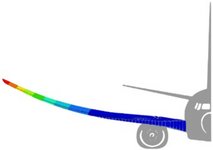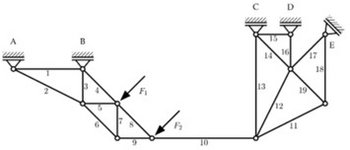| Number | 249985195 |
|---|---|
| Type | Lecture |
| Duration | 2 SWS |
| Term | Sommersemester 2024 |
| Language of instruction | German |
Objectives
You are able to describe the structural mechanics of real lightweight structures by means of simplified surrogate models simple enough to be studied with reasonable effort. You can calculate stresses and strains in simple line and surface structures subject to basic load cases. You understand the causes of stability failure of line and surface elements and you are able to identify measures to increase the stability limits. You can determine the stability limit values for simple geometries and loadings. You can evaluate the influence of cyclic loading on the service life and serviceability of a component and you are familiar with simple methods for fatigue strength verification. You know the materials most frequently used in lightweight structures, you can describe their essential material properties and also evaluate their suitability for a given application. You are able to identify and evaluate relevant design features and design methods of lightweight structures and to compare them with alternative solution concepts.
Description
The focus of this course is on structural elements, design methods and materials of lightweight structures. The mathematical theories of statics and dynamics of line elements (bars, beams) and surface elements (discs, plates) are presented and analytical solutions of the underlying differential equations for simple problems are derived. The concept of strength of metallic materials is reviewed and extended by the influence of cyclic loading. Stability is treated by studying buckling of slender beams and buckling of plates and thin-walled structures. Another focus of this course will be vibrations that are of particular importance in lightweight structures due to the susceptibility to vibration of many slender and thin-walled structures (wings, rotor blades). On the basis of practical applications, for example from the aerospace industry, automotive engineering, wind industry and sport devices, the various requirements on lightweight structures will be highlighted and the different views on lightweight design (material, shape and system perspective) will be discussed. Furthermore, the application of the presented design and calculation methods is illustrated.
Prerequisites
Fundamentals of Engineering mechanics, Materials Science for Engineering Science
Teaching and learning methods
The content of this classed is taught by means of a lecture, presentation slides and formulas written on the blackboard. In addition, essential results are summarized on slides using a tablet PC and provided to the students via the Moodle online teaching platform. In order to deepen selected theoretical contexts, small calculation examples are presented and their solutions are explained. Supplementary PowerPoint presentations with applications from the field of lightweight structures will provide a practical reference. A tutorial will be offered with academic instructors answering individual questions of the students.
Examination
The examination will be a 90-minute written exam which includes both short questions and problems. In the exam, students demonstrate to what extent they understand and recognize typical problems of lightweight structures and propose and evaluate suitable design solutions. By solving problems, the candidates should demonstrate that they are able to provide the necessary proof of strength and usability for a simple lightweight structure. Students are allowed to use a non-programmable scientific calculator and a one-sided DIN A4 sheet with arbitrary handwritten or printed notes in the examination.
Recommended literature
Wiedemann, Johannes (2007): Leichtbau. Elemente und Konstruktion. 3. Aufl. Berlin, Heidelberg, New York: Springer. Linke, Markus; Nast, Eckart (2015): Festigkeitslehre für den Leichtbau. Berlin, Heidelberg: Springer Berlin Heidelberg. Klein, Bernd (2012): Leichtbau-Konstruktion. Berechnungsgrundlagen und Gestaltung. Wiesbaden: Vieweg+Teubner Verlag / Springer Fachmedien Wiesbaden GmbH Wiesbaden

